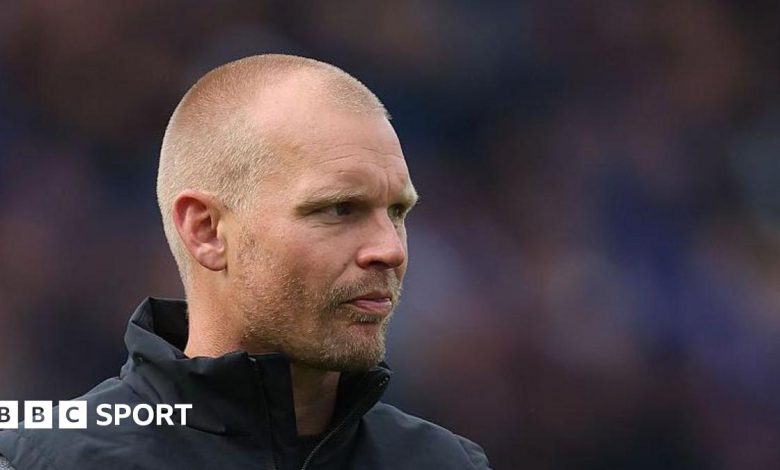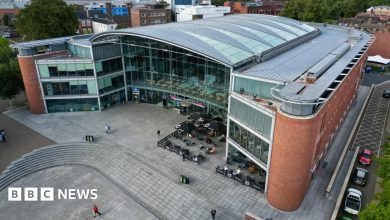Norwich City opinion: What is happening at Carrow Road?

The Struggles of Norwich City: A Deeper Look Beyond the Derby Defeat
In the aftermath of Norwich City’s first derby defeat to Ipswich Town in 16 years, BBC Radio Norfolk’s host Rob Butler asked perhaps the most pertinent question: “Can you see why fans will look above [manager Liam Manning] and say, he hasn’t got the players, he hasn’t got the tools?” This simple inquiry cuts to the heart of the current crisis at Norwich City. While it’s easy to point fingers at Manning for the disappointing performance, the reality is far more complex. As former owner Delia Smith might say, success—like a good recipe—requires multiple ingredients working in harmony. The current situation demands a comprehensive examination of the entire club structure, from top to bottom, to understand why such a prestigious club finds itself struggling so profoundly.
On the pitch, the team’s performance was notably lackluster. Besides Oscar Schwartau’s 188-second response that led to an equalizer, there was little evidence of collective determination or creative spark from the players wearing yellow. The team seemed to lack cohesion and drive, with individual efforts rarely translating into meaningful attacking threats. This disconnect between effort and effective action raises serious questions about player recruitment, tactical preparation, and the overall vision being communicated throughout the club. When a team of Norwich City’s caliber fails to demonstrate the fighting spirit expected in a derby match, deeper issues are clearly at play that extend beyond just the manager’s decisions on matchday.
The problems at Norwich City extend beyond the white lines of the playing field. Off-pitch decisions have further strained the relationship between the club and its loyal supporters. The stadium redevelopment plan, which has resulted in longtime fans being displaced from seats they’ve occupied for generations, has created a significant undercurrent of discontent. These supporters—many of whom have followed the Canaries through thick and thin—now feel marginalized by the very institution they’ve devoted themselves to for decades. When a club loses touch with its most dedicated followers, it risks eroding the foundation of passion and community that sustains it through difficult times, precisely when that support is most needed.
Norwich City’s current predicament reflects a potential disconnect between the club’s ambitions and its execution. For a club of its size and history, the expectations are naturally high. Fans rightfully anticipate competitive performances, especially against local rivals, and a clear progression toward stated goals. When these expectations aren’t met, and when communication about the broader strategy seems unclear, frustration inevitably builds. The question becomes whether the club’s leadership has established a coherent plan for success that aligns player recruitment, tactical approach, stadium development, and fan engagement into a unified vision that everyone associated with Norwich City can rally behind.
Leadership during challenging times requires both accountability and transparency. While Manning bears responsibility for on-field performance, the scrutiny must extend to the boardroom as well. Decisions about player investment, stadium development timing, and the overall direction of the club don’t happen in isolation. They reflect priorities set at the highest levels. The frustration visible among supporters suggests a growing concern that these priorities may not be optimally balanced. Creating a winning team while simultaneously undertaking major infrastructure projects is undoubtedly challenging, but supporters need to see evidence that both objectives are being pursued with equal vigor and competence.
The fundamental question—”What is going on at Norwich City these days?”—encapsulates the sense of bewilderment many fans feel. A proud club with a rich history now seems to be drifting without a clear sense of identity or purpose. Restoring faith will require more than just improved results; it demands a reconnection with the club’s core values and supporters. The path forward must involve honest dialogue between all stakeholders—ownership, management, players, and fans—about realistic expectations and a shared vision for the future. Norwich City’s challenges aren’t insurmountable, but addressing them requires acknowledging that the current issues run deeper than any single derby defeat. Only by recognizing the comprehensive nature of these challenges can the club begin the process of genuine renewal that its passionate supporters so desperately desire.









wibg1i